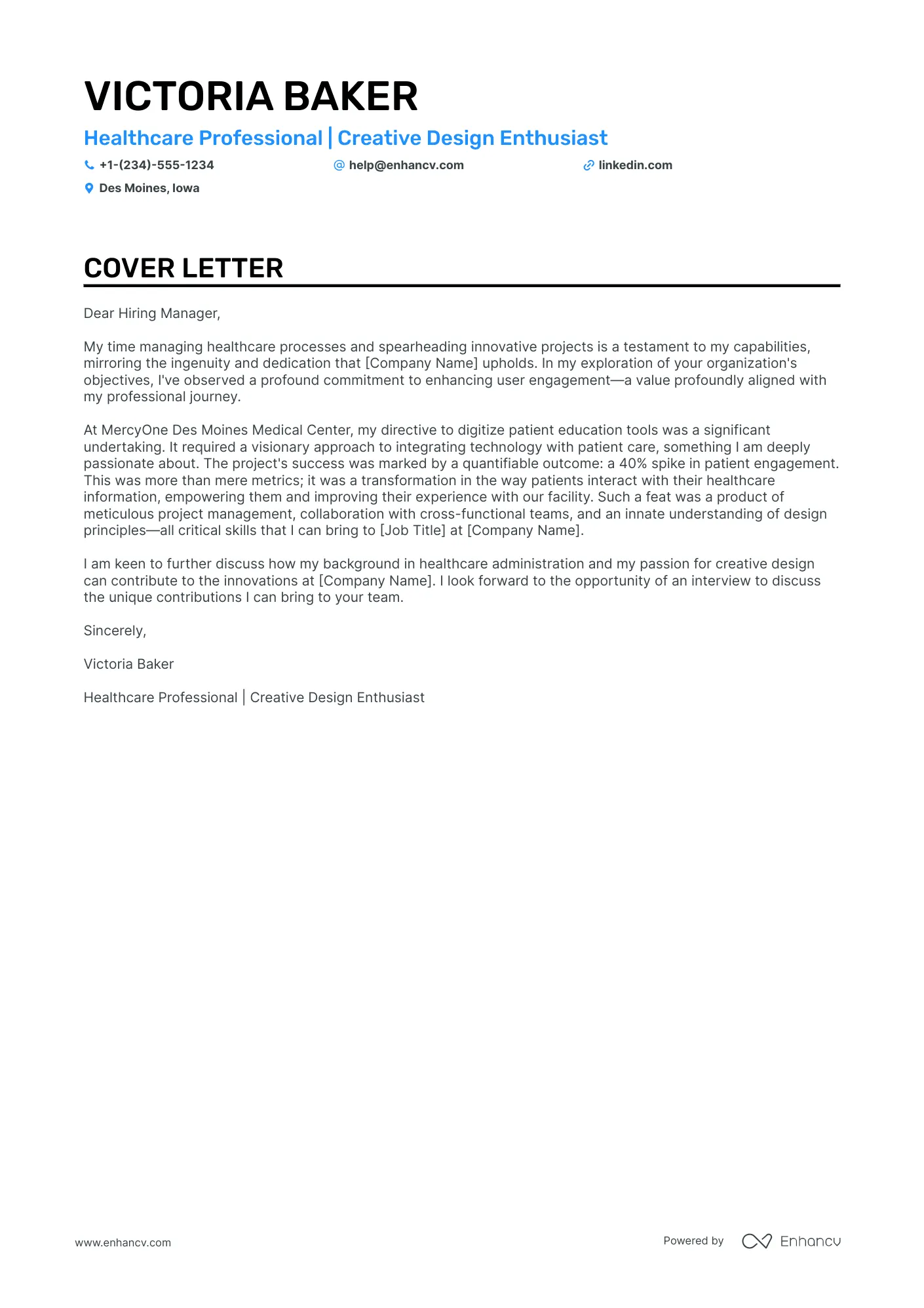Understanding the Importance of a Cover Letter
In the competitive landscape of a career change, a well-crafted cover letter is not merely a formality, it is your primary marketing tool and first impression. Unlike a resume, which provides a chronological overview of your work history, a cover letter offers the opportunity to narrate your career journey, explain your motivations for changing fields, and showcase how your existing skills align with the new role. It gives you space to connect your past experiences with the target job, highlighting the value you can bring to the table. By addressing specific requirements of the role, it demonstrates your understanding of the industry and the company’s needs. This personal touch sets you apart from other candidates who may rely solely on their resumes. When changing careers, your cover letter becomes even more critical as it allows you to address any gaps or perceived weaknesses in your experience, proactively showing how your skills are transferable and valuable.
Why a Cover Letter is Crucial for Career Changers
For those looking to switch careers, a cover letter becomes an indispensable tool, far exceeding the value it holds for those staying within their field. It provides the perfect stage to highlight your enthusiasm for the new industry and demonstrate how your skills are transferable. Career changers often face a perception hurdle, as their previous roles might not directly align with the new position. Your cover letter must directly address and overcome these concerns. By emphasizing your adaptable skills, problem-solving abilities, and eagerness to learn, you can reframe your experience to match the employer’s needs. A compelling cover letter helps an employer understand your career shift’s reasoning, thereby showing how your experience is a benefit. It bridges the gap between your past and your future, crafting a convincing narrative that elevates your candidacy. A tailored letter can show your alignment with the company’s culture and values.
Highlighting Transferable Skills
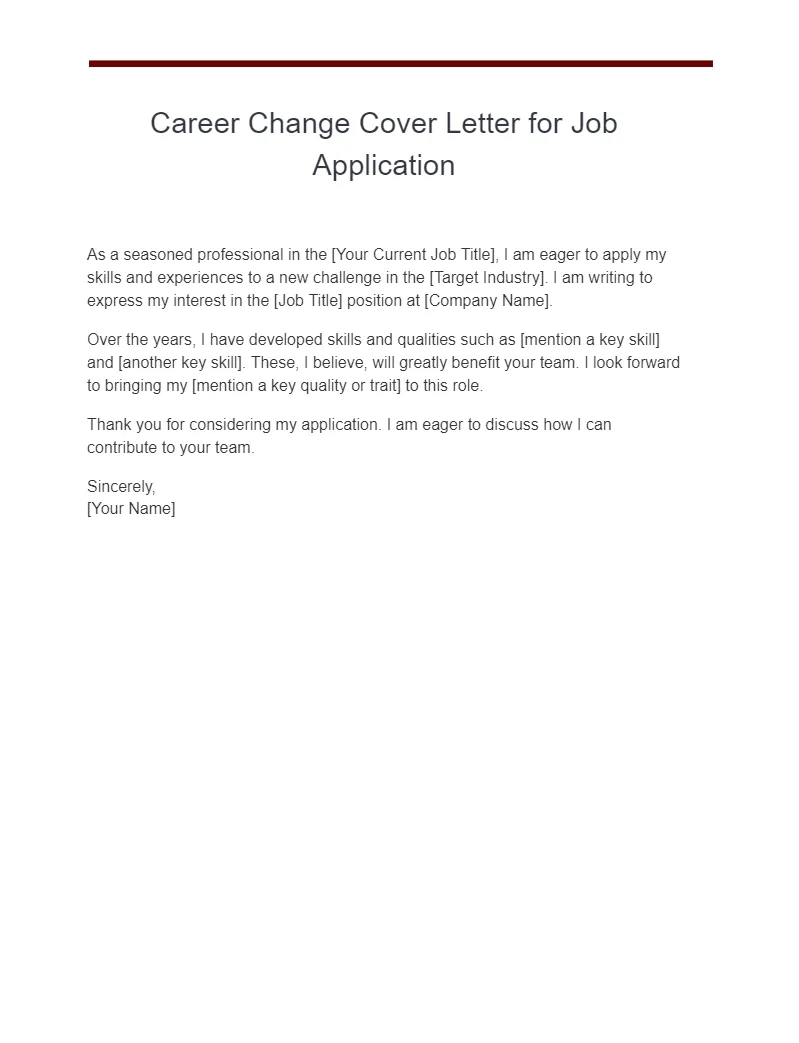
One of the most crucial aspects of writing a career change cover letter is highlighting your transferable skills. These are the abilities and competencies you’ve developed in previous roles that are relevant to the new career path. Identify skills like communication, project management, leadership, problem-solving, and adaptability which are highly sought after in most industries. Think beyond the specific technical skills and consider how your experience has honed these broader capabilities. For instance, if you’re transitioning from a customer service role to a project management position, emphasize your communication, organizational skills, and ability to manage multiple tasks. A well-written cover letter emphasizes how these skills can readily adapt to a new environment. Back up your claims with specific examples from your work history, showing how you applied these skills and what results you achieved. This detailed approach strengthens your application and shows the practical value you bring to the role.
Identifying Your Transferable Skills
To identify your transferable skills, start by thoroughly analyzing the job description of the role you’re targeting. Look for keywords that describe the necessary skills and competencies. Then, review your past experiences and pinpoint instances where you’ve utilized these skills. Create a skills inventory, listing your strengths and providing examples of how you’ve applied them. Think about projects you’ve led, challenges you’ve overcome, and results you’ve achieved. Consider skills like communication, teamwork, problem-solving, critical thinking, and adaptability. Also consider technical skills, like software or tools that are relevant to the new role. Once you have a list, match these skills to the requirements of the job. This process will help you craft a targeted cover letter that highlights the most relevant skills and demonstrates your ability to succeed in the new position. This strategic alignment proves your value and makes your application highly competitive.
Showcasing Your Relevant Experience
When changing careers, your cover letter should adeptly translate your past experiences into valuable assets for the desired role. Begin by selecting experiences most relevant to the new position, even if they aren’t directly aligned. Identify projects, responsibilities, or achievements that demonstrate the skills and knowledge sought by the employer. Instead of listing job duties, describe accomplishments and results. For example, if you are transitioning from marketing to project management, highlight instances where you’ve managed campaigns, met deadlines, and collaborated with diverse teams. Use the STAR method (Situation, Task, Action, Result) to structure your examples, clearly illustrating your contributions and the positive outcomes. Quantify your achievements whenever possible, using numbers and data to show the impact of your work. Ensure that your explanations are concise, relevant, and tailored to the specific requirements of the new role.
Tailoring Your Cover Letter to the New Role
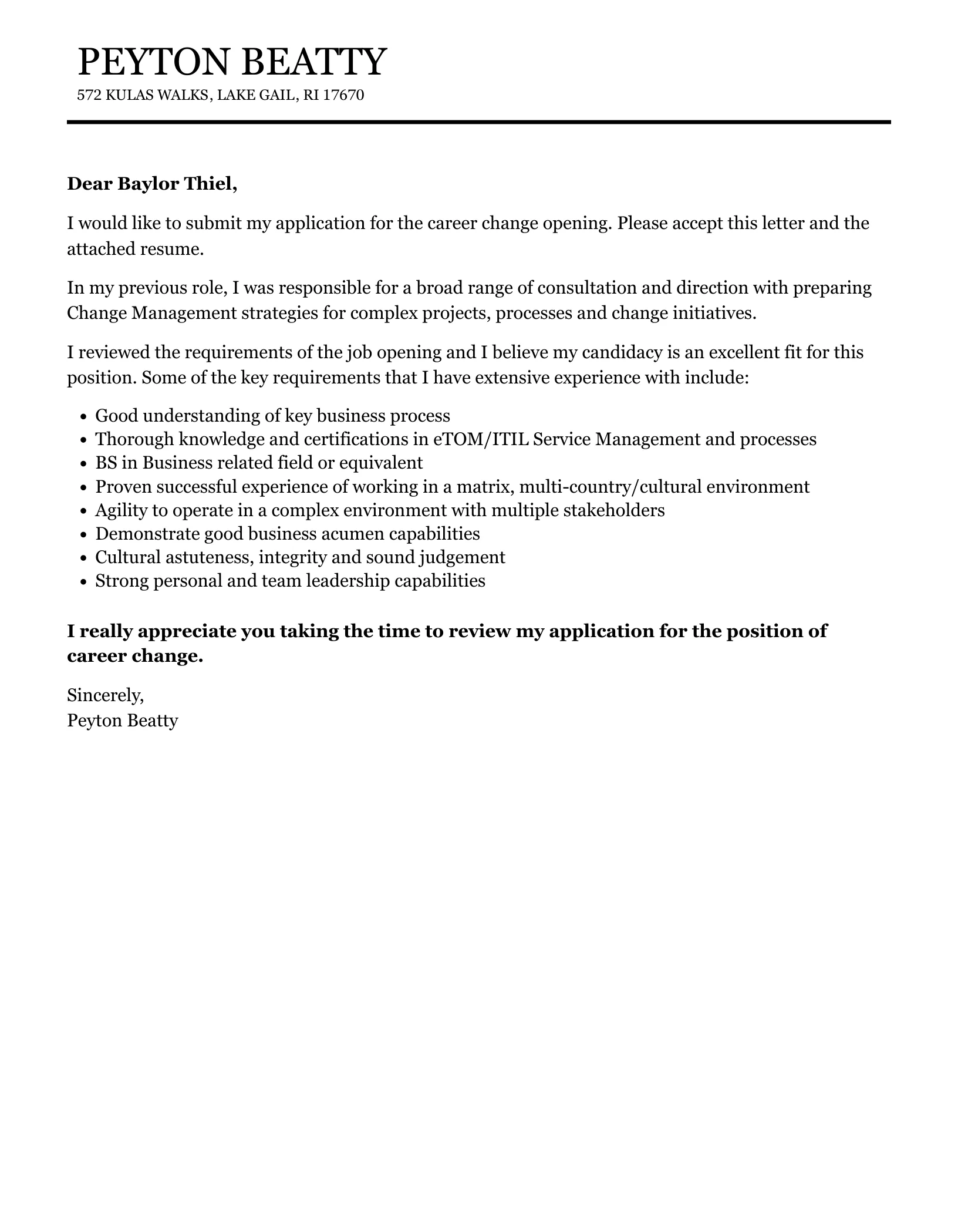
Customization is the cornerstone of a successful career change cover letter. Generic cover letters are easily recognizable and do not resonate with hiring managers. Instead, take the time to personalize your letter for each specific job and company. This process involves more than just changing the recipient’s name; it requires a deep understanding of the role’s requirements and the company’s values. Research the company, its mission, and its culture to demonstrate your genuine interest. Carefully review the job description and identify the key skills, qualifications, and experiences the employer is seeking. Then, tailor your cover letter to match these requirements. Highlight relevant skills, provide examples that demonstrate your abilities, and explain why you’re a great fit. By showing you understand the role and company, you increase your chances of capturing the hiring manager’s attention. The level of detail and personalization shows you are willing to invest in the application process.
Researching the Company and Role
Before you start writing, invest time in researching the company and the specific role you are applying for. This shows your genuine interest and helps you tailor your cover letter more effectively. Visit the company’s website to learn about its mission, values, and recent initiatives. Explore their social media profiles to get a sense of their culture and workplace environment. Read articles, press releases, and industry publications to understand their current projects and future goals. When researching the role, examine the job description carefully, looking for key requirements, responsibilities, and desired qualifications. Identify the skills and experiences they’re seeking, and think about how your background aligns with those needs. Use this information to customize your cover letter, demonstrating your understanding of the role and why you are a perfect fit. This research allows you to provide more specific examples and show your commitment to the company.
Structuring Your Cover Letter
The structure of your cover letter is crucial for conveying your message effectively. A well-organized cover letter is easy to read and guides the hiring manager through your key qualifications and career change narrative. Typically, a cover letter consists of three to four main sections: an opening paragraph, body paragraphs (usually two to three), and a closing paragraph. Each section serves a specific purpose. The opening should capture the reader’s attention and state your interest in the position. The body paragraphs should highlight your skills and experiences, focusing on transferable competencies and illustrating how they apply to the role. Use specific examples to support your claims. The closing paragraph should summarize your qualifications, reiterate your interest, and include a clear call to action. Use a professional tone and ensure that each section flows logically into the next. A clear structure provides clarity and allows the reader to quickly grasp your qualifications and suitability for the role.
The Opening Paragraph
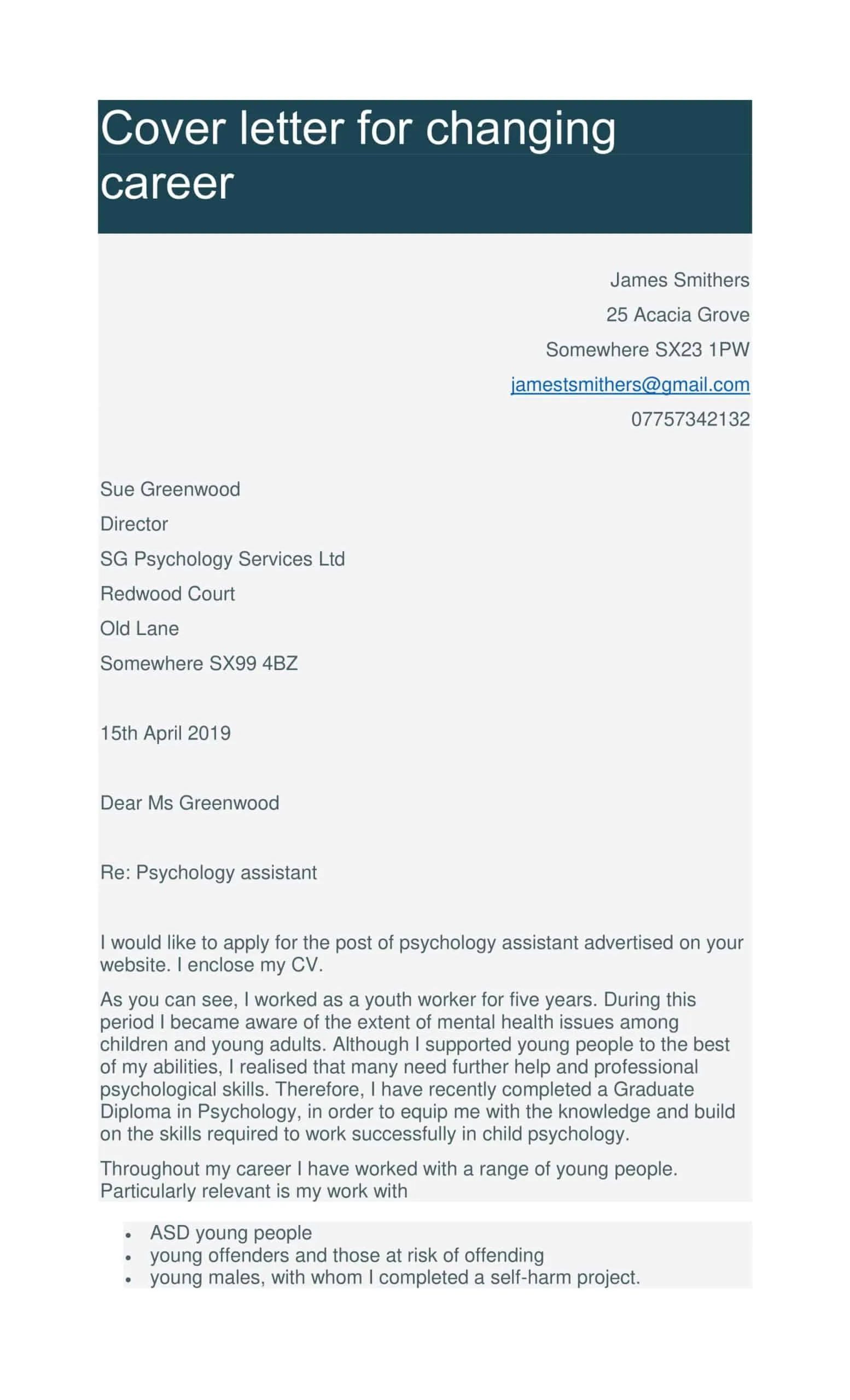
The opening paragraph is your first chance to grab the hiring manager’s attention. It should immediately state the position you’re applying for and where you found the job posting. Then, create a strong hook that captures the reader’s interest. This could be a brief statement about why you are excited about the role, a key skill you possess that aligns with the job requirements, or a brief mention of a significant accomplishment. As a career changer, this section is especially crucial. It can establish your reasons for the career shift. Keep the opening paragraph concise and focused, typically no more than three to four sentences. Tailor the opening to the specific company and role, showing that you have done your research. The goal is to create a positive first impression and encourage the hiring manager to read the rest of your letter. A well-crafted opening can set the tone and increase your chances of securing an interview.
The Body Paragraphs
The body paragraphs form the core of your cover letter and should expand on your skills and experiences. In a career change cover letter, these paragraphs provide an opportunity to explain the logic behind your career shift. Begin by identifying the most relevant skills and experiences and explaining how they align with the new role. Use specific examples from your past work to illustrate your abilities and achievements. The STAR method (Situation, Task, Action, Result) is very helpful in structuring these examples. Each paragraph should focus on a key aspect of your qualifications. Don’t repeat information from your resume; use the cover letter to provide additional context and to elaborate on your accomplishments. Quantify your achievements whenever possible. Aim for a balance of clarity, relevance, and conciseness. The body paragraphs should make a strong case for your candidacy and demonstrate your ability to succeed in the new role.
The Closing Paragraph
The closing paragraph offers the chance to summarize your qualifications and reiterate your interest in the position. Begin by restating your enthusiasm for the opportunity and briefly summarizing why you are a strong candidate. Reiterate key skills or experiences that make you particularly well-suited for the role. Include a clear call to action. This could be a statement expressing your eagerness to discuss your qualifications further in an interview. Also, provide your contact information so the hiring manager can easily get in touch. Expressing gratitude for the hiring manager’s time and consideration is always a good idea. The closing should be concise, professional, and leave a lasting positive impression. A well-crafted closing paragraph ensures that your cover letter ends on a strong note and increases the likelihood of securing an interview.
Providing a Strong Call to Action
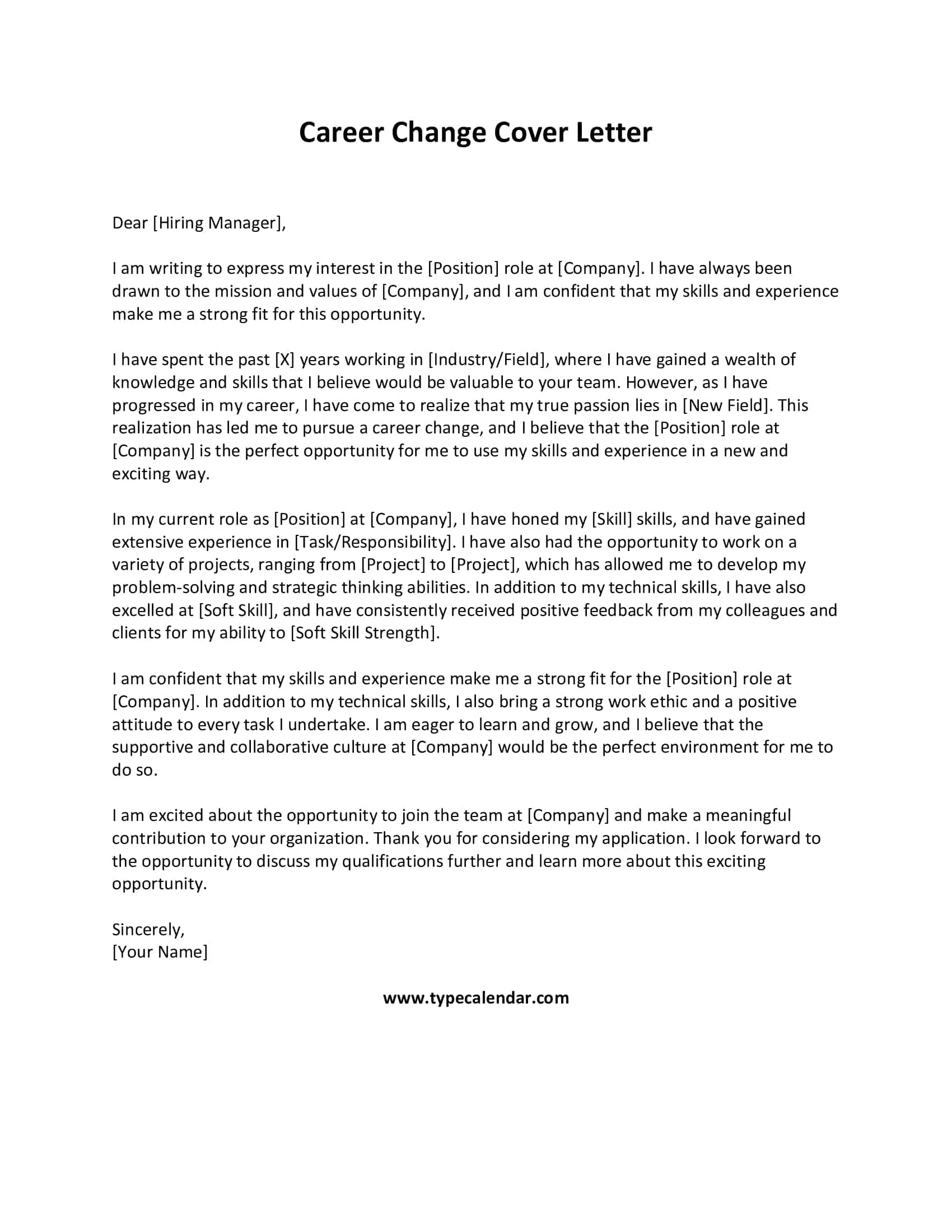
A strong call to action is essential in your cover letter’s closing paragraph. It encourages the hiring manager to take the next step, increasing your chances of getting an interview. A call to action should be clear, direct, and specific. Avoid vague statements like, “I look forward to hearing from you.” Instead, express your eagerness to discuss your qualifications in detail and request an interview. You might state something like, “I am excited about the opportunity to bring my skills and experience to [Company Name] and would welcome the chance to discuss my qualifications further in an interview.” Also, ensure that your contact information is readily available, making it easy for the hiring manager to reach you. Providing a strong call to action shows your proactiveness and commitment to the position, setting you apart from other candidates. A well-placed call to action turns a passive application into an active pursuit.
Formatting and Design Tips
The formatting and design of your cover letter can significantly impact the reader’s perception. A well-formatted letter is easy to read and leaves a positive impression. Use a professional font such as Times New Roman, Arial, or Calibri, in a readable size (11 or 12 points). Maintain consistent formatting throughout the document. Use left alignment and single spacing, with a blank line between paragraphs. Keep the letter concise, ideally one page in length. Divide the content into clear sections, using headings and bullet points to improve readability. Avoid excessive use of bolding, underlining, or italics, which can make the letter look cluttered. Ensure that your letter is free of any grammatical errors, typos, or spelling mistakes. A clean, well-formatted cover letter shows your attention to detail and professionalism, increasing your chances of standing out. A polished presentation underscores your commitment to excellence.
Proofreading and Editing
Before submitting your cover letter, proofread and edit it meticulously. Errors in grammar, spelling, or punctuation can undermine your credibility and professionalism. Read the letter carefully, looking for any mistakes. Then, consider asking a friend, family member, or career advisor to review it. A fresh pair of eyes can often catch errors you might have missed. Pay close attention to the clarity and conciseness of your writing. Ensure your message is well-structured and easy to follow. Make sure your tone is professional and enthusiastic. Verify that the letter is tailored to the specific job and company. Ensure that you have included all necessary information, like your contact details. Proofreading is a crucial step in the job application process, and shows your commitment to accuracy and detail. A polished and error-free cover letter will increase your chances of making a strong impression.
